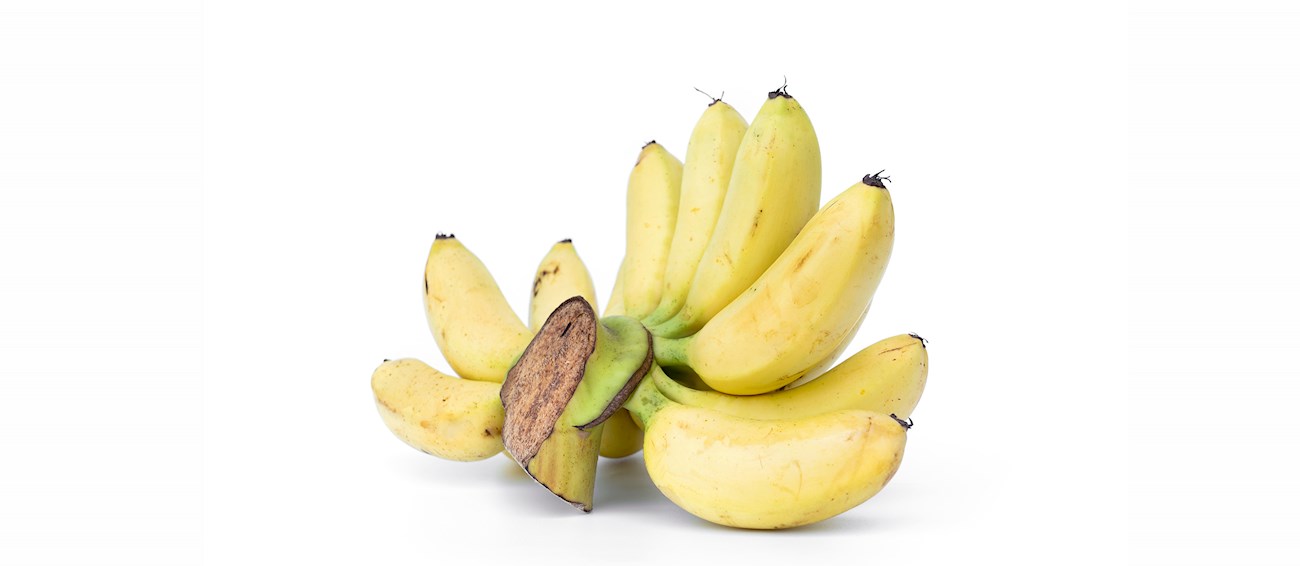TABLE OF CONTENTS
Best Asian Fruit Types
Mangosteen, also known as purple mangosteen, is a tropical plant grown for its sweet fruit. Its origin is believed be on the Sunda Islands, now divided between Indonesia, Malaysia, Brunei, and East Timor. Mangosteen is characterized by its dark purple, firm shell which covers and protects the edible white fruit.
The texture of the fruit is soft, juicy, and delicate, while the flavor is sweet with slight hints of tartness. The fruit is usually enjoyed plain, but it can also be incorporated in various baked desserts, mixed salads, custards, smoothies, teas, or ice creams.
Lady Finger banana is a small, sweet variety of banana distinguished from others by its size, taste, and texture. It is significantly smaller and thinner than the more commonly known Cavendish banana, typically measuring about 4 to 6 inches (10 to 15 centimeters) in length.
What sets the Lady Finger banana apart is its exceptionally sweet flavor and creamy texture, making it a favorite for fresh eating. Its sweetness is often compared to that of honey, and it has a delicate, almost floral flavor profile. The skin of the Lady Finger banana is thin and the flesh is less dense compared to larger banana varieties, contributing to its unique texture.
Ben Tre province in Vietnam is known as the capital of coconuts. The coconut trees hold a special place in the cultural life and the economic development of the province. Due to the salty water with clay mud that’s fertile and rich, the coconuts growing here have excellent conditions, and the fruit yield is higher than in other regions.
The thick coconut shells contain more organic matter, sweeter coconut water, and coconut meat with more fat. The coconut oil accounts for 65% of content in Ben Tre coconuts. The fruit is used to make a lot of things, from beverages and food to household utensils.
Nestled in the heart of the Menderes river valley, the historical region of Aydin is best known for its flavorful figs, which have been cultivated in the Mediterranean for centuries. Aydin figs typically yield after 5 years, but are able to bear fruit for up to 50 years from planting.
After being harvested at the end of August, Aydin figs are usually sun-dried and thus preserved for winter as a good source of energy, high in fibers and fructose. These chewy, sugar encrusted, dried Aydin figs are excellent with müesli for breakfast or they can be used as filling in various traditional Turkish pastries.
Calamansi (lat. Citrus × microcarpa) is a small citrus fruit hybrid native to the Philippines and widely used across Southeast Asia.
The fruit is spherical, typically about 20 to 25 millimeters in diameter, and has a green to golden yellow color when ripe. Despite its small size, calamansi packs a flavorful punch and is highly aromatic. The taste of calamansi is a unique blend of sweet and sour, similar to a cross between a lime and a mandarin orange, making it versatile in both culinary and beverage applications.
Malaysian Musang King, also known as Mao Shan Wang, is considered one of the best durian varieties and is highly sought after for its rich, creamy texture and intense taste. It has a bright yellow flesh that is thick and custard-like, with a complex flavor profile that combines sweetness with a hint of bitterness.
The fruit is large and has a distinctive spiky husk. Although this cultivar was known as Raja Kunyit for at least 200 years, it only gained popularity in the 1980s, when its consistency was stabilized, and the fruit was registered with MARDI (The Malaysian Agricultural and Research Development Institute).
Bayramiç beyazı is the fruit of a local nectarine variety that's grown in the Turkish province of Çanakkale and the district of Bayramiç. Just slightly bigger than a cherry, this crunchy fruit has smooth skin with color ranging from light green to pink.
The aromas are fresh and sweet, reminiscent of peaches, plums, and apricots. Juicy, refreshing, and aromatic, Bayramiç beyazı are best enjoyed fresh, but they are also perfect for jams or cakes.
Rambutan is a medium-sized evergreen tree originating from the rainforests of western Malaysia and Singapore. The trees produce fruits that are round with leathery skin that’s covered in soft hairlike spines. The colors range from dark red to yellow.
The pulp is subacid to sweet and it contains a single seed. The seeds contain up to 40% fat, which is extracted and used for making soap. In the Philippines, people sometimes roast the seeds and eat them as a snack. The fruits are usually eaten out of hand and they are sold fresh or canned.
Lychee is a tropical fruit that's native to the Chinese provinces of Fujian and Guangdong. The fruit is oval to round, red in color, and has a brittle and inedible outer covering that encloses a translucent white flesh on the inside and one large seed.
The flavor of the pulp is musky and aromatic when fresh, and when dried, it's acidic and sweet. Lychees are most commonly enjoyed fresh, but they can also be dried, canned, used in ice creams, or processed into wine, juice, and jelly. The fruit is a good source of minerals, vitamins, and antioxidants.
Fuji is a Japanese variety of apple that was produced by cross-pollination of the Red Delicious and Virginia Ralls Janet varieties back in the late 1930s. This apple is distinguished by a red-yellow skin that surrounds its creamy white flesh that's renowned for its exceptional sweetness, low acidity, juiciness, firmness, and crispiness.
Owing to their excellent characteristics and their long shelf-life, these refreshing and fragrant apples are nowadays among the most commonly grown apple varieties around the world. They're expensive because the climate in Japan is not suitable for growing apples, so each one needs to be wrapped in cellophane while it's still growing on trees.
TABLE OF CONTENTS
Best Asian Fruits
The Ajimu Wine Moroya Koshu is a white wine from Japan. Made from the Koshu grape, it presents aromas of pear drops and exotic stone fruit, with peach notes. The palate is savory and balanced, offering good length. This still white wine has an alcohol content of 11.5%.
It is celebrated for its unique flavor profile, reflecting the distinctive qualities of the Koshu grape variety.
AWARDS

Decanter World Wine Awards - Platinum
2022
TasteAtlas food rankings are based on the ratings of the TasteAtlas audience, with a series of mechanisms that recognize real users and that ignore bot, nationalist or local patriotic ratings, and give additional value to the ratings of users that the system recognizes as knowledgeable. For the “Top 58 Asian Fruits” list until January 29, 2025, 1,509 ratings were recorded, of which 1,055 were recognized by the system as legitimate. TasteAtlas Rankings should not be seen as the final global conclusion about food. Their purpose is to promote excellent local foods, instill pride in traditional dishes, and arouse curiosity about dishes you haven’t tried.

































































